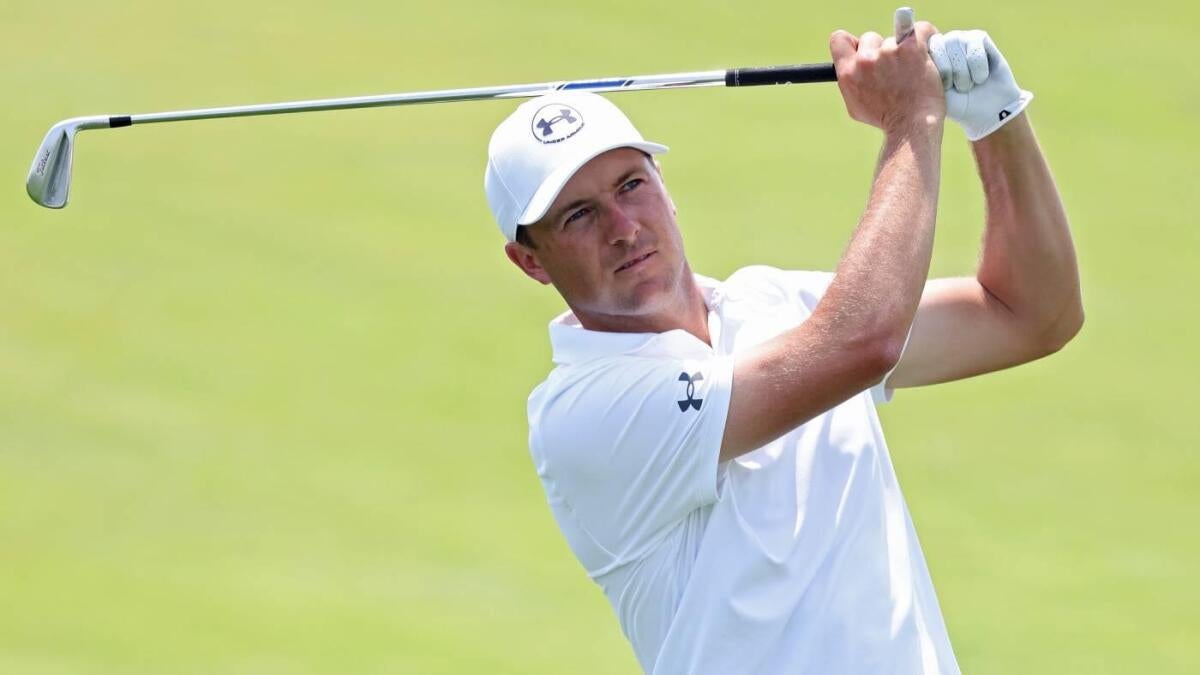The Calculated Return: Jordan Spieth’s Strategy for Reclaiming Golfing Prominence
A Champion’s Recent History: Navigating Challenges
Jordan Spieth, once a dominant force in golf, has faced a series of challenges that have tested his resolve and skill. Achieving the world number one ranking and completing a career Grand Slam by 2017, Spieth’s trajectory has not been a continuous ascent. Recent years have seen fluctuations in his performance, with flashes of brilliance interspersed with periods of inconsistency. His last PGA Tour victory came in 2022, and finishes like a T-23 at the U.S. Open highlight the need for improvement. These struggles have been compounded by a wrist issue dating back to 2018, which was finally addressed through surgery in the offseason.
The wrist surgery was a significant setback, but it also provided an opportunity for Spieth to reassess his approach to the game. Observers have noted a lack of “high-end weeks” in his recent performances, indicating a need to elevate his overall game. This period of struggle has prompted introspection, with Spieth acknowledging the relatable nature of his challenges. Recognizing that many golfers experience similar periods of inconsistency, Spieth has used this self-awareness as a key component of his current strategy.
The Post-Surgery Approach: Short-Term Focus
Returning to competition at the 2025 AT&T Pebble Beach Pro-Am, Spieth’s immediate focus is on assessment and rebuilding confidence. The surgery necessitated a swing adjustment to eliminate “bad habits,” and he now expresses “full confidence and trust” in the revised mechanics. This isn’t about a radical overhaul but rather a refinement aimed at optimizing performance and minimizing strain on the recovering wrist.
The emphasis is on regaining competitive form and establishing consistency. Spieth is adopting a deliberate, “baby steps” approach, recognizing the need to avoid rushing the recovery process. This measured pace is a departure from the famously impatient Spieth of the past, suggesting a maturation in his approach to the game. The initial goal isn’t necessarily to win but to build a solid foundation for the remainder of the season. By focusing on short-term gains, Spieth aims to create a stable platform from which he can launch his long-term aspirations.
The Lofty Aspiration: Ryder Cup Dreams
Despite the short-term focus on recovery and form, Spieth has a clear, overarching goal: to represent the United States at the 2025 Ryder Cup. This ambition serves as a powerful motivator, providing a tangible target to drive his efforts. The Ryder Cup represents not only individual achievement but also the opportunity to contribute to a team success, a dynamic in which Spieth has demonstrably thrived throughout his career.
The pursuit of this goal acknowledges the competitive landscape of professional golf. The American team is brimming with talent, including Scottie Scheffler, a close friend and travel partner, adding an extra layer of motivation. Spieth understands that simply returning to play isn’t enough; he needs to demonstrate consistent high-level performance to earn a spot on the team. This long-term aspiration is a driving force behind his strategic approach, pushing him to elevate his game and prove his worth on the international stage.
Physical and Technical Adjustments: A Holistic Approach
Spieth’s return isn’t solely focused on swing mechanics. A renewed emphasis on lower body and core strength has been implemented, aiming to enhance explosiveness and power generation from the hips—a crucial element of his game. This holistic approach recognizes the interconnectedness of physical conditioning and technical proficiency. By strengthening his foundation, Spieth aims to improve his overall performance and longevity in the sport.
Furthermore, there’s a clear reassessment of his overall career path. Having reached the top at a young age, Spieth is now confronting the realities of longevity in a demanding sport. He’s learning from past experiences and adapting his strategies to maximize his potential within the constraints of time and physical limitations. This holistic approach ensures that Spieth is not just focusing on immediate gains but also on long-term sustainability, a crucial factor in a sport where consistency and endurance are key.
The Road Ahead: A Test of Patience and Resilience
The 2025 season presents a crucial period for Jordan Spieth. Balancing short-term recovery goals with the long-term aspiration of Ryder Cup selection will require patience, discipline, and resilience. His willingness to embrace a measured approach, coupled with a commitment to physical and technical refinement, suggests a player determined to reclaim his place among golf’s elite.
The narrative isn’t about a return to the dominant form of 2015 but rather a calculated evolution. Spieth is building a new foundation, one that prioritizes sustainable performance and a strategic path towards achieving his ultimate goal. This approach reflects a deep understanding of the challenges posed by injury and a dip in recent form, and a willingness to prioritize sustainable progress over instant results.
A Defining Chapter
Jordan Spieth’s current journey is more than just a comeback story; it’s a testament to the adaptability and mental fortitude required to thrive in professional golf. His approach—a deliberate blend of short-term focus and long-term ambition—offers a compelling case study in navigating the challenges of injury and maintaining relevance in a constantly evolving sport.
Whether he ultimately achieves his Ryder Cup dream remains to be seen, but his commitment to the process and his willingness to learn and adapt suggest that this chapter in his career will be defined not by past glories but by the resilience and strategic brilliance of his calculated return. Spieth’s journey serves as an inspiration to athletes and fans alike, demonstrating the power of perseverance and strategic planning in the face of adversity.











